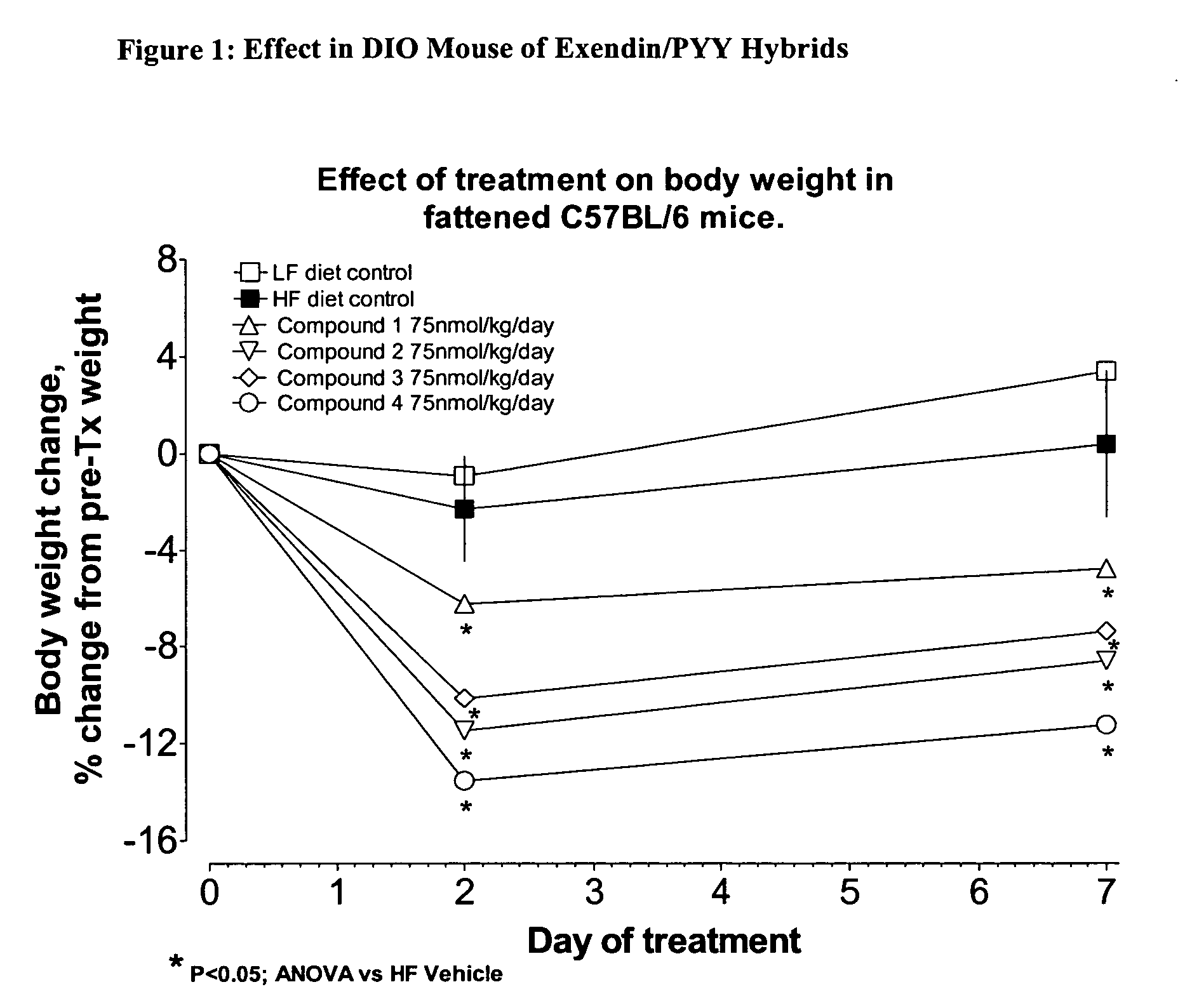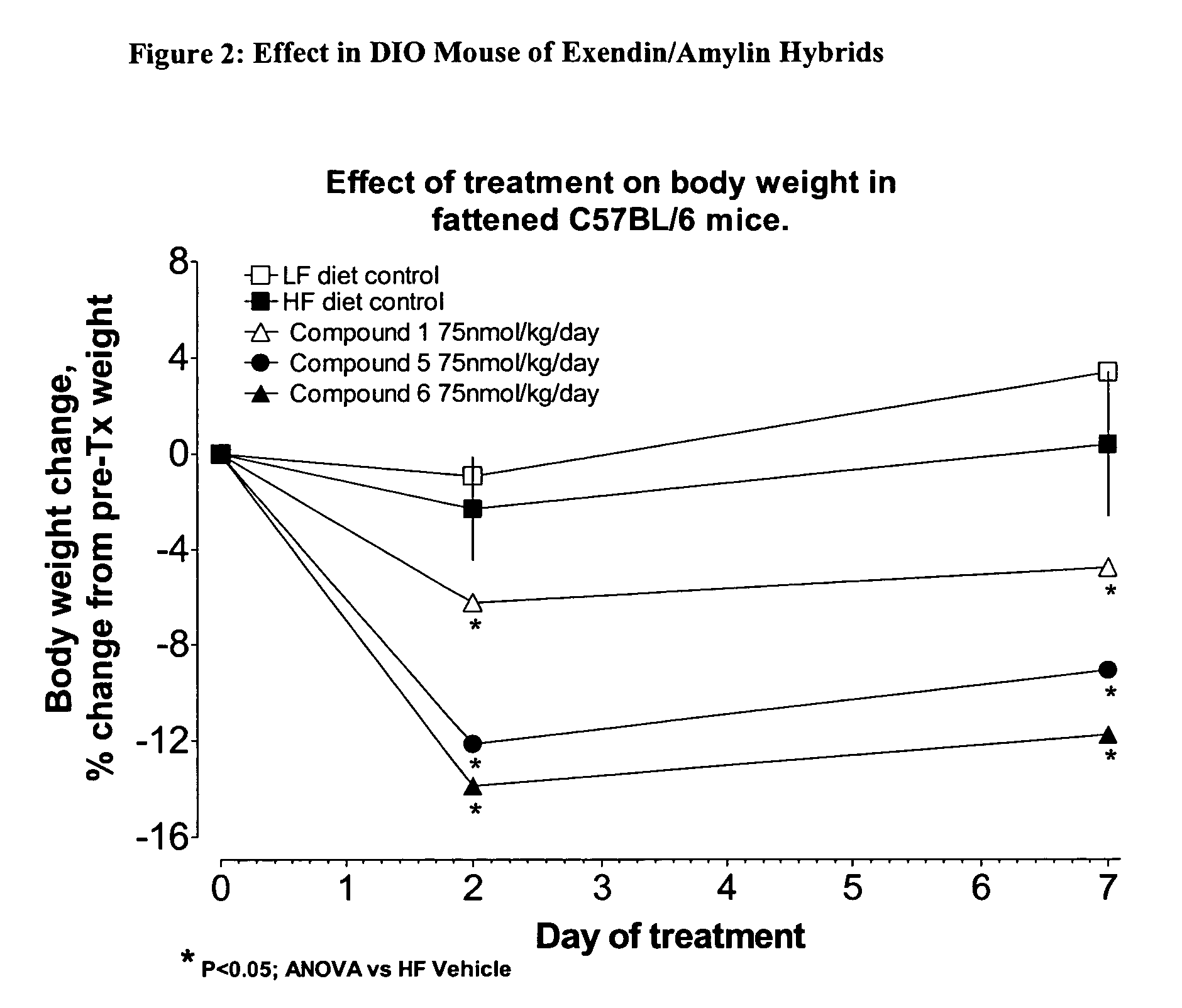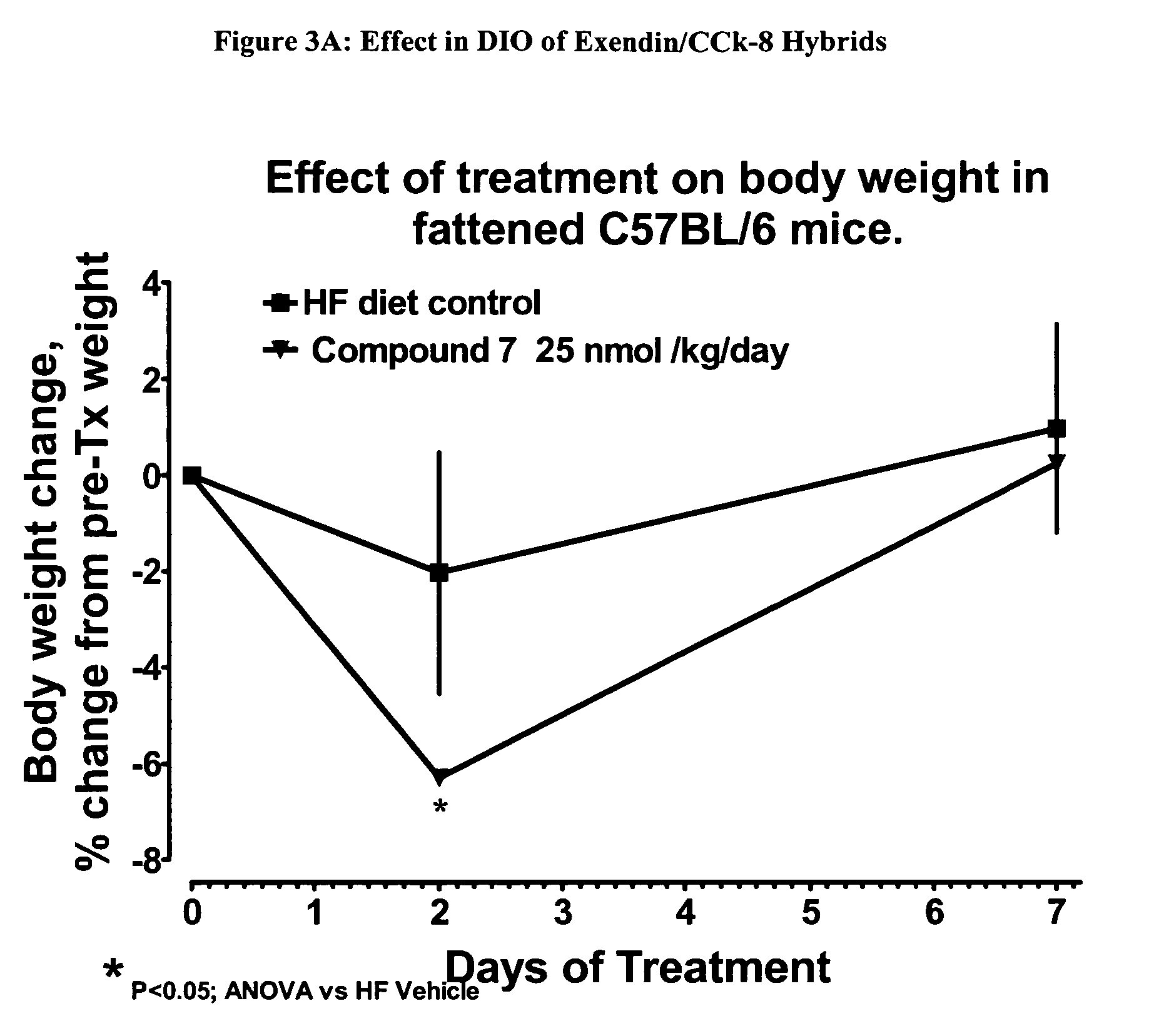Hybrid polypeptides having glucose lowering activity
a hybrid polypeptide and glucose-lowering activity technology, applied in the field of peptide chemistry, can solve the problems of reducing bone resorption, reducing beta cell function, and complicated use of glp-1 type molecules for prolonged diabetes treatment, so as to reverse glucose intolerance, increase beta cell mass, and restore beta cell function
- Summary
- Abstract
- Description
- Claims
- Application Information
AI Technical Summary
Benefits of technology
Problems solved by technology
Method used
Image
Examples
example 1
Preparation of Hybrid Polypeptides
[0302]Peptides of the invention may be assembled on a Symphony peptide synthesizer (Protein Technologies, Inc.) using Rink amide resin (Novabiochem) with a loading of 0.43-0.49 mmol / g at 0.050-0.100 mmol or a pre-loaded Wang Resin (Fmoc-Tyr(tBu)-Wang resin) 0.63 mmol / g (Novabiochem). Fmoc amino acid (5.0 eq, 0.250-0.500 mmol) residues are dissolved at a concentration of 0.10 M in 1-methyl-2-pyrrolidinone. All other reagents (HBTU, 1-Hydroxybenzotriazole hydrate and N,N-Diisopropylethylamine) are prepared as 0.55 M Dimethylformamide solutions. The Fmoc protected amino acids are then coupled to the resin-bound amino acid using, HBTU (2.0 eq, 0.100-0.200 mmol), 1-Hydroxybenzotriazole hydrate (1.8 eq, 0.090-0.18 mmol), N,N-Diisopropylethylamine (2.4 eq, 0.120-0.240 mmol) for 2 hours. Following the last amino acid coupling, the peptide is deprotected using 20% (v / v) piperidine in dimethylformamide for 1 hour. Once peptide sequence is complete, the Sympho...
example 2
Binding Assays
[0307]The hybrid polypeptides of the invention may be tested in a variety of receptor binding assays using binding assay methodologies generally known to those skilled in the art. Such assays include those described herein.
[0308]Amylin binding assay: Evaluation of the binding of some exemplary compounds of the invention to amylin receptors may be carried out as follows in nuclueus accumbens membranes prepared from rat brain. Male Sprague-Dawleys rats (200-250) grams are sacrificed by decapitation. Brains are removed and place in cold phosphate-buffered saline (PBS). From the ventral surface, cuts are made rostral to the hypothalamus, bounded laterally by the olfactory tracts and extending at a 45° angle medially from these tracts. This basal forebrain tissue, containing the nucleus accumbens and surrounding regions, is weighed and homogenized in ice-cold 20 mM HEPES buffer (20 mM HEPES acid, pH adjusted to 7.4 with NaOH at 23° C.). Membranes are washed three times in f...
example 3
Mouse Food Intake Assay
[0319]The hybrid polypeptides of the invention may be tested for appetite suppression in the mouse food intake assay and for their effect on body weight gain in diet-induced obesity (DIO) mice. The experimental protocols for the screens are described below.
[0320]Female NIH / Swiss mice (8-24 weeks old) are group housed with a 12:12 hour light:dark cycle with lights on at 0600. Water and a standard pelleted mouse chow diet are available ad libitum, except as noted. Animals are fasted starting at approximately 1500 hrs, 1 day prior to experiment. The morning of the experiment, animals are divided into experimental groups. In a typical study, n=4 cages with 3 mice / cage.
[0321]At time=0 min, all animals are given an intraperitoneal injection of vehicle or compound, typically in an amount ranging from about 10 nmol / kg to 75 nmol / kg, and immediately given a pre-weighed amount (10-15 g) of the standard chow. Food is removed and weighed at various times, typically 30, 60...
PUM
| Property | Measurement | Unit |
|---|---|---|
| molecular weight | aaaaa | aaaaa |
| total volume | aaaaa | aaaaa |
| volume | aaaaa | aaaaa |
Abstract
Description
Claims
Application Information
 Login to View More
Login to View More - R&D
- Intellectual Property
- Life Sciences
- Materials
- Tech Scout
- Unparalleled Data Quality
- Higher Quality Content
- 60% Fewer Hallucinations
Browse by: Latest US Patents, China's latest patents, Technical Efficacy Thesaurus, Application Domain, Technology Topic, Popular Technical Reports.
© 2025 PatSnap. All rights reserved.Legal|Privacy policy|Modern Slavery Act Transparency Statement|Sitemap|About US| Contact US: help@patsnap.com



